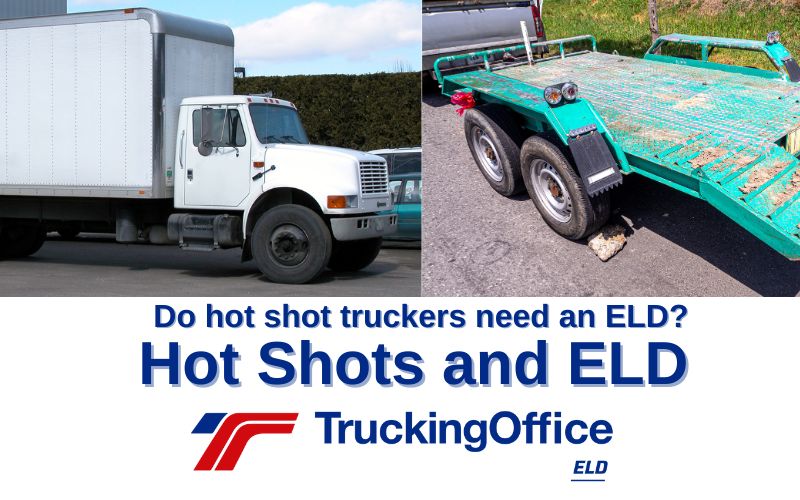If you’re running a hot shot trucking business, does your rig need and ELD? Hots shots and ELD is a question we hear often enough. There’s a split on the topic. Some people think they don’t need an ELD. Others believe they do.
Why is there any confusion on this?
Hot Shot Trucking
Hot shot trucking has always been a profitable trucking niche. Smaller loads have always needed a trucker who can pick up and deliver, often in locations where a semi truck can’t get in. But the truckers who are picking up loads and moving them – especially across state lines – are required to have an electronic logging device (ELD).
Who has to follow the HOS regulations?
What do the regulations say:
Drivers of a commercial motor vehicle (CMV) that is used as part of a business, is involved in interstate commerce, and fits any of these descriptions:
•Weighs 10,001 pounds or more
•Has a gross vehicle weight rating or gross combination weight rating of 10,001 pounds or more
• Is designed or used to transport 16 or more passengers (including the driver) not for compensation
• Is designed or used to transport 9 or more passengers (including the driver) for compensation
• Is transporting hazardous materials in a quantity requiring placards
Most hot shot truckers fall into one or more of these categories.
14/10 Days
The first rule of HOS is that a day is broken into 2 parts: 14 hours on the road, and 10 hours off. But there are exemptions.
11-hour driving limit
During the 14-hour workday, truckers can only drive their truck for a maximum of 11 hours once they’ve been of duty for 10 consecutive hours. Breaks are also required during the day. Let’s face, we’re humans and sometimes we gotta stop. So even if breaks for meals and maybe a brisk walk around the truck stop, that 14 hour rule applies. A 34 hour long break is required once a week.
These rules also apply to hot shot drivers.
In 2020, FMCSA approved some new exemptions:
These rules come from the FMCSA website:
Short-haul Exception: Expands the short-haul exception to 150 air-miles and allows a 14-hour work shift to take place as part of the exception.
Adverse Driving Conditions Exception: Expands the driving window during adverse driving conditions by up to an additional 2 hours.
30-Minute Break Requirement: Requires break of at least 30 consecutive minutes after 8 cumulative hours of driving time (instead of on-duty time) and allows an on-duty/not driving period to qualify as the required break.
Sleeper Berth Provision: Modifies the sleeper berth exception to allow a driver to meet the 10-hour minimum off-duty requirement by spending at least 7 hours of that period in the berth combined with a minimum off-duty period of at least 2 hours spent inside or outside the berth, provided the two periods total at least 10 hours. When used together as specified, neither qualify period counts against the 14-hour driving window.
Clear as mud, right?
Hot shots drivers often struggle to understand these rules because they don’t bother to learn them. But hot shots and ELD are a combination that will help you keep track of your hours of service. (And, you know, they’re required by the DOT.)
Hot Shot Drivers Need ELD
Every compliant ELD tracks hours in the same way. The problem isn’t how the ELD works. The question is:
Does this ELD fit in your truck?
Many ELD producers never think about pickup trucks or box trucks. They were designed for the big semi tractor trailer.
TruckingOffice ELD is ready to go into your pickup truck, your box truck, or your light duty truck.
So if you’re using a RAM, Chevy, or Ford, TruckingOffice ELD is ready to install and easy to use. Link your ELD to your own phone or tablet. No extra equipment for recording is needed. You save money not buying an extra recorder to lose in your truck!







Recent Comments